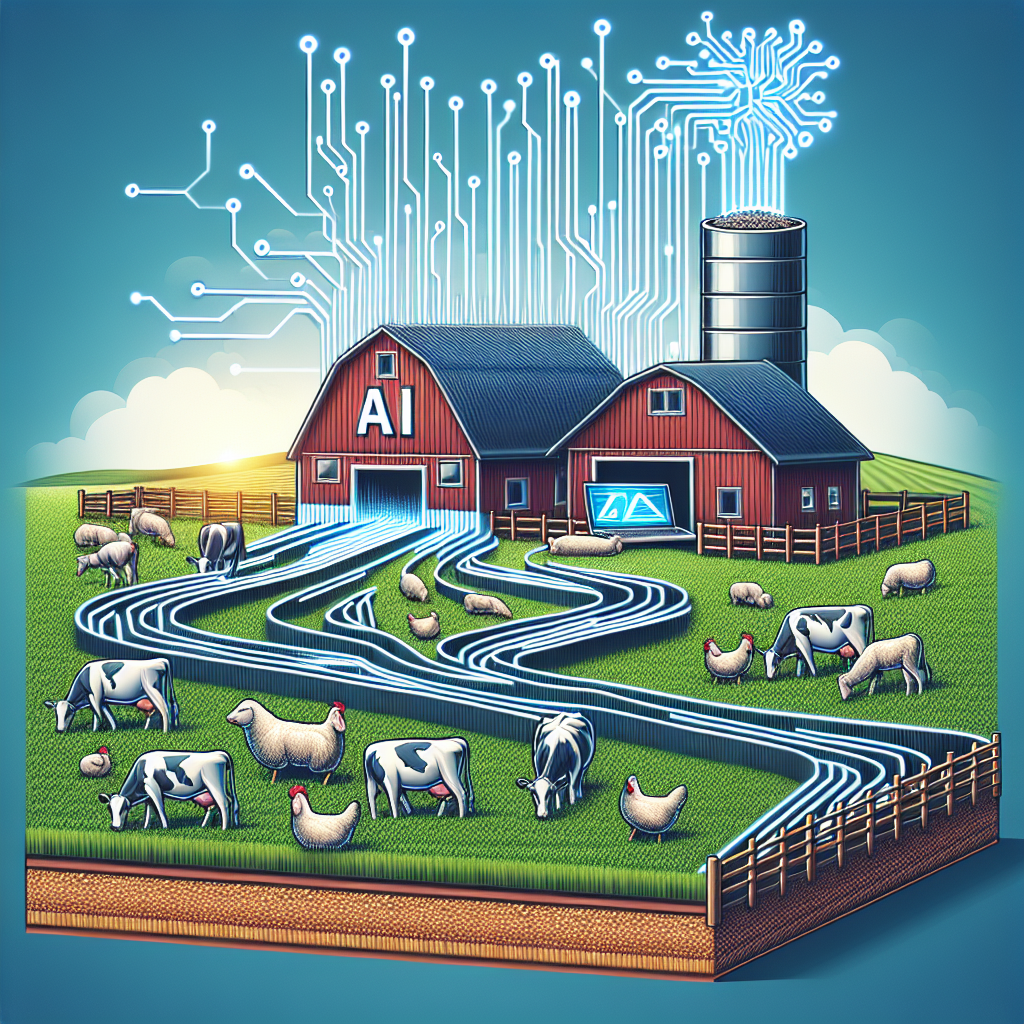AI-driven Solutions for Livestock Feed Optimization
In recent years, the use of artificial intelligence (AI) in agriculture has been gaining traction as a powerful tool for optimizing various aspects of farming operations. One area where AI is making a significant impact is in the optimization of livestock feed. With the growing demand for animal products and the need to reduce waste and improve efficiency in livestock farming, AI-driven solutions are becoming increasingly crucial for farmers to maximize their productivity and profitability.
AI technology has the ability to analyze large amounts of data and generate insights that can help farmers make more informed decisions about their livestock feed. By leveraging AI algorithms, farmers can optimize their feed formulations to meet the specific nutritional needs of their animals, reduce costs, and minimize environmental impact. In this article, we will explore how AI is revolutionizing livestock feed optimization and the benefits it offers to farmers.
Benefits of AI-driven Solutions for Livestock Feed Optimization
1. Improved Feed Formulation: One of the key benefits of using AI in livestock feed optimization is the ability to develop more precise and efficient feed formulations. By analyzing data on animal health, growth rates, and nutritional requirements, AI algorithms can recommend the ideal combination of ingredients to maximize animal performance and minimize waste.
2. Cost Savings: AI-driven feed optimization can help farmers reduce costs by identifying cost-effective ingredients and optimizing feed formulations to minimize waste. By using AI to analyze data on ingredient prices, availability, and nutritional content, farmers can make informed decisions that will help them save money on feed costs.
3. Enhanced Animal Health and Performance: By optimizing feed formulations to meet the specific nutritional needs of their animals, farmers can improve animal health and performance. AI-driven solutions can recommend the right balance of proteins, fats, vitamins, and minerals to ensure that animals receive the nutrients they need to thrive.
4. Environmental Sustainability: AI-driven feed optimization can also help farmers reduce their environmental footprint by minimizing waste and improving feed efficiency. By optimizing feed formulations, farmers can reduce the amount of feed required to achieve optimal animal performance, leading to lower greenhouse gas emissions and reduced water and land usage.
5. Real-time Monitoring and Adjustments: AI technology can also enable real-time monitoring of animal health and feed consumption, allowing farmers to make adjustments to feed formulations as needed. By collecting data on animal behavior, feed intake, and growth rates, AI algorithms can provide insights that help farmers optimize feed rations and detect health issues early on.
AI-driven Solutions for Livestock Feed Optimization in Action
One example of AI-driven solutions for livestock feed optimization is the use of predictive analytics to forecast animal growth and nutrient requirements. By analyzing historical data on animal performance, feed intake, and environmental conditions, AI algorithms can predict how animals will respond to different feed formulations and recommend the optimal diet for each individual animal.
Another example is the use of machine learning algorithms to optimize feed formulations based on real-time data. By collecting data on animal health, feed intake, and environmental conditions, AI systems can continuously adjust feed rations to meet the changing needs of animals and optimize feed efficiency.
Moreover, AI technology can also be used to analyze the nutritional content of feed ingredients and recommend the best combination of ingredients to meet the specific requirements of different types of livestock. By analyzing data on ingredient composition, digestibility, and availability, AI algorithms can generate feed formulations that maximize nutrient absorption and minimize waste.
FAQs
1. How does AI technology optimize livestock feed formulations?
AI technology optimizes livestock feed formulations by analyzing data on animal health, growth rates, and nutritional requirements to recommend the ideal combination of ingredients that maximize animal performance and minimize waste.
2. What are the benefits of using AI-driven solutions for livestock feed optimization?
The benefits of using AI-driven solutions for livestock feed optimization include improved feed formulation, cost savings, enhanced animal health and performance, environmental sustainability, and real-time monitoring and adjustments.
3. How can farmers implement AI-driven solutions for livestock feed optimization on their farms?
Farmers can implement AI-driven solutions for livestock feed optimization by investing in AI technology and partnering with companies that specialize in AI-driven agriculture solutions. By collecting data on animal health, feed intake, and environmental conditions, farmers can leverage AI algorithms to optimize feed formulations and improve overall farm efficiency.
4. What are some examples of AI-driven solutions for livestock feed optimization in action?
Some examples of AI-driven solutions for livestock feed optimization include the use of predictive analytics to forecast animal growth and nutrient requirements, machine learning algorithms to optimize feed formulations based on real-time data, and analysis of feed ingredient composition to recommend the best combination of ingredients for different types of livestock.
In conclusion, AI-driven solutions for livestock feed optimization are revolutionizing the way farmers manage their feed formulations and improve animal performance. By leveraging AI technology, farmers can optimize feed rations, reduce costs, enhance animal health and performance, and minimize environmental impact. As the demand for animal products continues to grow, AI-driven solutions will play an increasingly important role in helping farmers meet the challenges of modern agriculture and ensure the sustainability of livestock farming.

